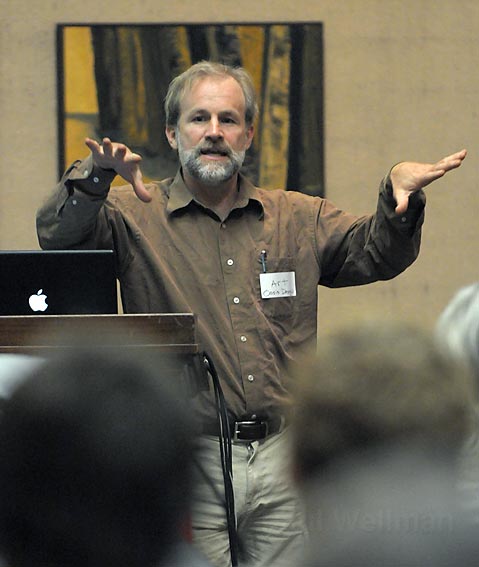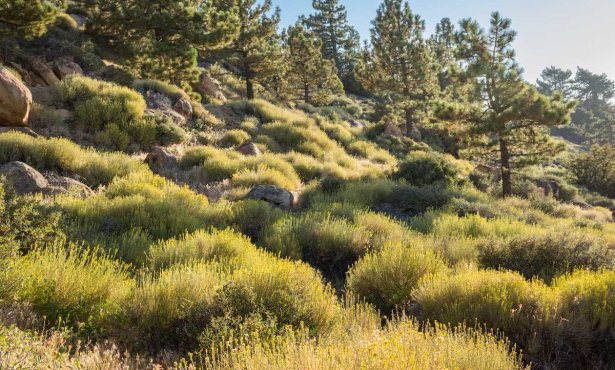State Allows Greywater Systems
Santa Barbaran Art Ludwig Pushed Change in Building Standards
As California verges on a fourth year of drought, lawmakers, homeowners, and water districts are seeking ever more creative ways to save water. The use of greywater, from laundry and showers, to water fruit trees, has been championed by various groups for a while now, but it wasn’t until Tuesday, August 4 that it became completely legal, with the California Building Standards Commission deciding to allow homeowners to install their own greywater systems. There are already 1.7 million of them statewide, but due to a lack of qualified installers, most have been illegal until now. “It’s an ‘abstinence-only’ greywater system that pushed people to do it illegally,” said Art Ludwig, longtime gray-water activist and chief designer for Oasis Design, a small firm that builds the systems and distributes educational materials. “Tuesday, August 4, 2009, is California greywater liberation day.”

Nearly 150 people packed Santa Barbara Public Library’s Faulkner Gallery on Monday evening, August 3, and the place was packed again the next morning, for Ludwig’s workshop titled “Laundry to Landscape,” covering greywater systems, their installation, and related issues.
Ludwig explained that the concept of reusing greywater instead of letting it flow into the sewer or septic systems isn’t as simple as merely dumping it all in the backyard. The water from kitchen sinks, toilets, and dishwashers contains too much bacteria to be released onto the surface of someone’s yard, he said. However, water from normal washing machine use-with biodegradable soaps-can be used to keep four fruit trees watered. “I think we’re going to see a lot more of that, especially if there’s another year of drought,” said William Brennan, executive director of the Central Coast Water Authority, which is responsible for bringing State Water Project resources to Santa Barbara County. “It has a very unsavory appeal to a lot of the public, but I think it’s come a long way.”
Garden recycling of used washing machine water has often been criticized by people who equate greywater with the unsanitary spoils of the toilet. But Ludwig-a UC Berkeley graduate who for 30 years has been designing eco-friendly water and energy systems from his home in the foothills below San Marcos Pass-said that plant roots, with their thousands of root hairs and millions of dirt-squeezing protein molecules, do a far more effective job of filtering water than does a standard sewage treatment plant. He explained that in nature, 90 percent of water filtration occurs within the one-foot layer of topsoil that is enmeshed with plant roots, microbes, and insects. “Most of what I’ve learned has been synthesized in the wilderness, and I’ve learned it only from being in the wilderness,” he said, showing slides and giving information about the numerous countries he has visited to study ecology.
While Tuesday morning’s workshop session focused on the technical aspects of greywater conversion-what kinds of pipes, valves, and tools to use-the previous evening’s presentation was about integrating the various processes that daily life requires, to create a simpler, ecologically sensitive, more efficient, and more enjoyable life. “There has been entrenched resistance to interrupting the profit stream,” said Ludwig, referencing some tense moments with building trade lobbyists at a greywater stakeholders’ meeting in Sacramento last month. “It’s time for us to redesign pretty much our whole way of living. Lifestyle change has to be on the table,” he said. “If you want a greenwash job on top of your existing lifestyle, forget it,” he added. (The term “greenwash” in this usage being a pejorative term analogous to a “whitewash.”)
Oasis is a family operation. Ludwig effects the research and design work, some of it exemplified by the unique features of his family’s home-covered with fire-resistant, hand-sculpted “cob”-at the edge of fire-prone Los Padres National Forest. His wife and daughter work in the office, which is a shingle-clad trailer overlooking a majestic canyon. Part of walking the walk, Ludwig stressed, is less dependence upon distant providers. “Aggressive fire suppression and affordable insurance has allowed us to carpet the foothills with flammable houses,” he said. “Enjoy it while it lasts. California spent $1 billion on fire suppression [last year]. In the future, we’re going to have to rely upon our own resources.”



